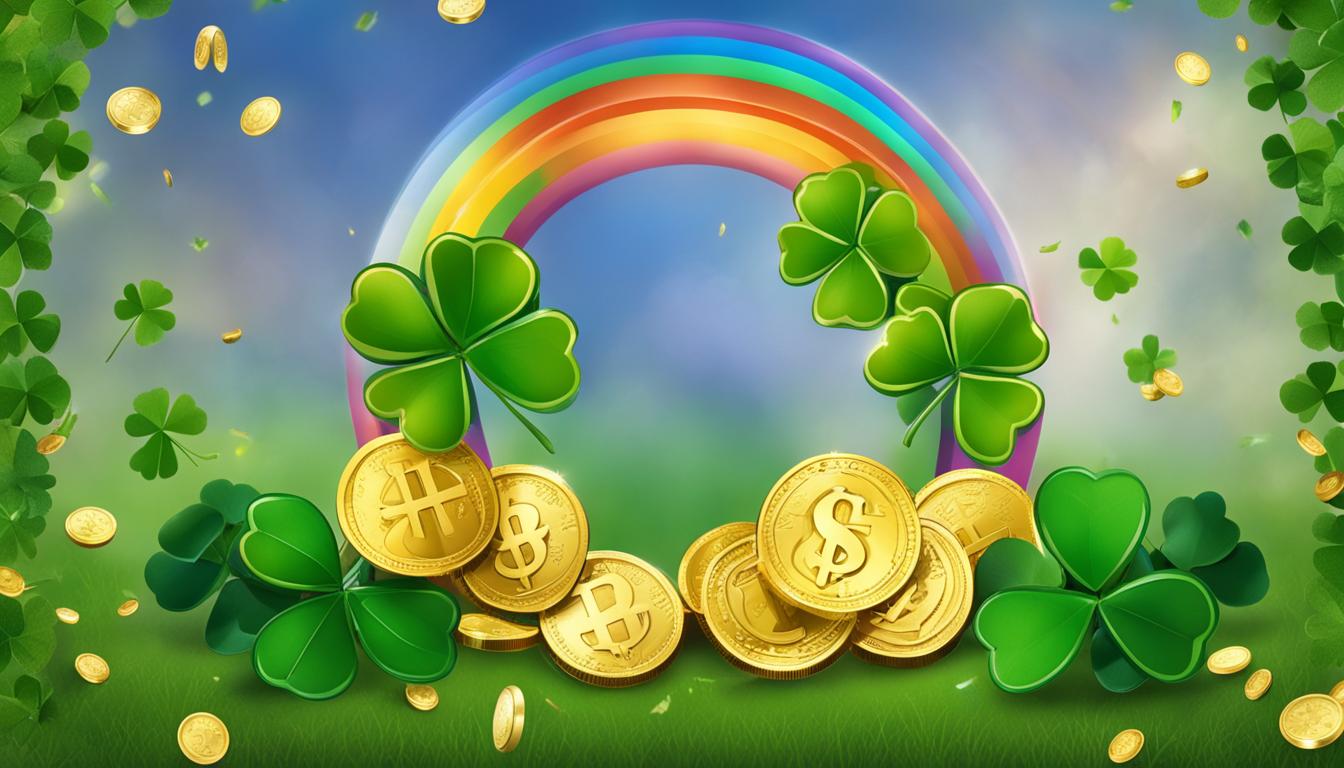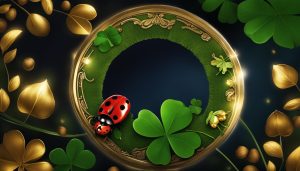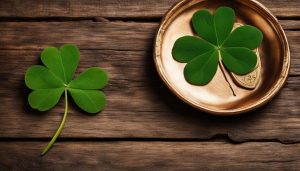Welcome to our fascinating journey into the world of lucky symbols and good fortune. Have you ever wondered why certain objects or symbols are considered to bring luck? In this article, we will delve into the symbolism and meanings behind some of the most popular lucky symbols, also known as good luck charms. From ancient traditions to modern beliefs, we will uncover the secrets of these symbols and explore their significance in different cultures and even in gambling. Get ready to unlock the power of luck and embrace the positivity and abundance that these symbols can bring into your life.
Contents
Key Takeaways:
- Lucky symbols hold deeper meanings and symbolism that can attract positivity and abundance.
- Elephants, Ganesha, four-leaf clovers, pigs, and horseshoes are some popular symbols of good luck.
- Lucky symbols vary across cultures and can have unique meanings and superstitions attached to them.
- In gambling, lucky talismans like dragons, lucky coins, and laughing Buddha are believed to bring wealth and success.
- Embracing lucky symbols can help cultivate a positive mindset and navigate life’s challenges with resilience.
The Power of Lucky Symbols – Bringing Good Fortune into Your Life
Throughout history, cultures around the world have embraced various lucky symbols as a way to bring good fortune into their lives. These symbols hold deep meaning and are often steeped in superstition. From rabbits’ feet to horseshoes, lucky symbols have the power to attract positive energies and cultivate a mindset of abundance.
Lucky symbols can come in many forms and have different meanings attached to them. For example, in Western culture, rabbits’ feet have long been considered lucky charms. Regardless of the color, these furry talismans are believed to bring good luck and ward off evil spirits. Another popular symbol in the West is the horseshoe, which is associated with good luck, protection, and abundance. The Colts football team from Indianapolis even uses a horseshoe as their emblem, further emphasizing its association with good fortune.
It’s not just in the West that lucky symbols hold significance. In different cultures around the world, there are a myriad of symbols believed to bring good luck. For instance, in Chinese culture, the number 8 is considered lucky, as it is associated with wealth and prosperity. The Laughing Buddha is another symbol often found in Chinese homes and businesses, representing good luck, happiness, and success. In Japanese culture, the Lucky Cat, also known as Maneki-neko, is a common sight, believed to bring good fortune and financial prosperity.
Overall, lucky symbols hold a special place in people’s hearts and minds. They serve as reminders to stay positive, embrace abundance, and manifest good fortune. By surrounding yourself with lucky symbols, you can tap into their symbolic energies and cultivate a mindset of luck and positivity. They may not guarantee success, but they can certainly help you navigate life’s challenges with grace and resilience.
Exploring Lucky Symbols in Different Cultures
Across different cultures, lucky symbols hold deep significance and are believed to bring good fortune and positivity into people’s lives. Let’s take a closer look at some fascinating lucky symbols from around the world and the symbolism they represent.
Chinese Culture
In Chinese culture, various lucky symbols are cherished for their association with prosperity, wealth, and success. The number 8 is considered extremely lucky as it sounds similar to the word for wealth. Laughing Buddha, also known as Budai or Hotei, is a popular lucky charm that symbolizes joy, prosperity, and good luck. Lucky Coins, often tied together with a red string, symbolize financial success and are commonly used during the Lunar New Year celebrations.
Japanese Culture
In Japan, lucky symbols play a significant role in daily life. The Lucky Cat, known as Maneki-neko, is a talisman believed to bring good luck and fortune to its owner. This charming cat figurine, often seen waving its paw, can be found in shops, homes, and businesses across Japan. The Koi Fish is another popular symbol associated with luck and transformation. It represents perseverance, ambition, and the ability to overcome challenges.
Korean Culture
Korean culture also has its unique collection of lucky symbols. The Norigae, a decorative traditional Korean pendant, is worn as a symbol of blessings and protection. It is often given as a gift on special occasions such as weddings and birthdays. Bokjumeoni, a traditional Korean lucky bag, symbolizes good fortune and is believed to bring luck and abundance to its owner. These cultural symbols serve as reminders of blessings and bring a sense of positivity.
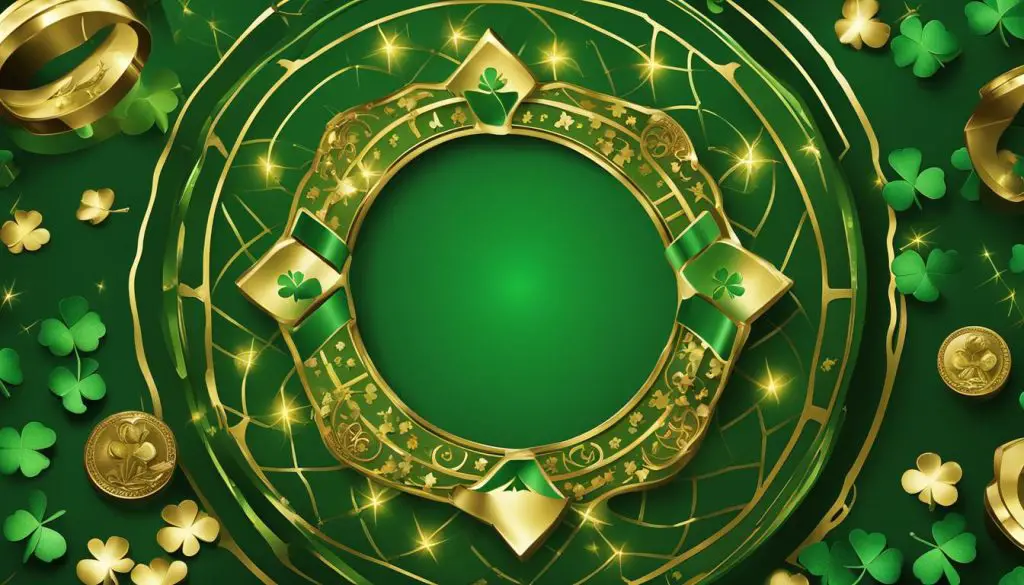
When it comes to gambling, people have long believed in the power of lucky symbols and talismans to attract money and wealth. These symbols hold a special significance, believed to bring good luck and increase the chances of winning. Whether it’s a lucky charm, a specific symbol, or a cultural talisman, gamblers around the world have embraced these beliefs as they try their luck at the tables and slot machines.
In Chinese culture, Lucky Coins and Dragons are widely regarded as lucky symbols for gambling. The Lucky Coins are believed to bring financial success, while the Dragons represent strength and good fortune. The Laughing Buddha, with its jolly demeanor, is also a popular talisman among gamblers, thought to attract wealth and prosperity.
“Luck is what happens when preparation meets opportunity.” – Seneca
In Japanese culture, the Lucky Cat, also known as Maneki-neko, is a common sight in gambling establishments. With its raised paw, it is said to beckon good luck and bring fortune to its owner. Another symbol of luck in Japan is the Koi Fish, symbolizing transformation and aspiration, which is often featured in artwork and decorations in casinos and gambling venues.
Korean gambling charms like the Norigae and Bokjumeoni are also believed to bring good luck and fortune. The Norigae is a traditional Korean ornament that is worn as a pendant or attached to clothing, while the Bokjumeoni is a small silk pouch used to carry personal belongings. These charms are cherished by Korean gamblers, who believe they can help attract positive energies and increase their chances of winning.
| Lucky Symbols | Meaning |
|---|---|
| Lucky Coins | Financial success |
| Dragons | Strength and good fortune |
| Laughing Buddha | Wealth and prosperity |
| Lucky Cat | Good luck and fortune |
| Koi Fish | Transformation and aspiration |
| Norigae | Blessings and protection |
| Bokjumeoni | Good luck and fortune |
Embracing Lucky Symbols – Cultivating Positivity and Abundance
Lucky symbols hold a special place in our lives, transcending their physical form to become powerful sources of positivity and abundance. By embracing these symbols, we invite luck and good fortune into our lives, harnessing their symbolic energies to navigate the challenges that come our way.
These lucky symbols serve as constant reminders to cultivate a positive mindset and to approach life with grace and resilience. They act as talismans, guiding us towards opportunities and helping us manifest our desires. Whether it’s wearing a lucky charm or placing an elephant figurine in your home, these symbols become anchors of hope and belief in our journey towards success.
In the midst of uncertainty and adversity, lucky symbols provide a sense of comfort and reassurance. They serve as reminders that we have the power to shape our own destiny and create our own luck. When faced with obstacles, we can draw strength from these symbols, knowing that they are imbued with centuries of belief and tradition.
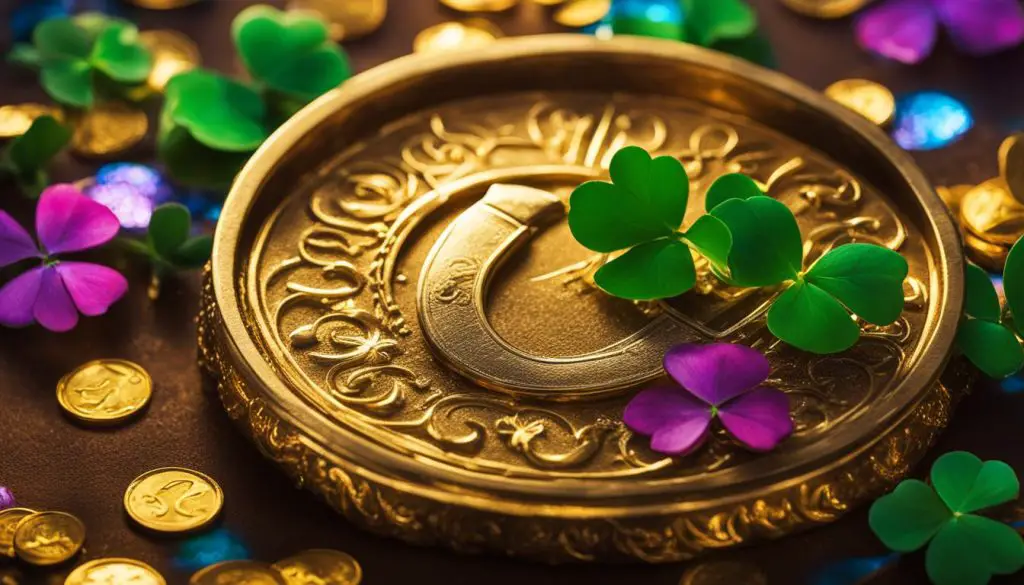
Embracing Lucky Symbols: Tips for Cultivating Positivity
- Choose a lucky symbol that resonates with you personally. It could be an animal, a number, a color, or any other object that holds significance to you.
- Keep your lucky symbol close to you, whether it’s wearing it as a piece of jewelry, carrying it in your pocket, or displaying it in your living space.
- Take a moment each day to focus on your lucky symbol and set intentions for the positive outcomes you wish to attract.
- Use your lucky symbol as a visual cue to remind yourself to stay positive and grateful, even during challenging times.
- Combine your lucky symbol with other positive practices, such as meditation, affirmations, or visualization exercises, to amplify its effects.
“Luck is what happens when preparation meets opportunity.” – Seneca
As Seneca suggests, luck is not purely a matter of chance but a result of our preparedness and mindset. Embracing lucky symbols is a way to align ourselves with the energy of luck and create an environment that attracts positivity and abundance. By cultivating a positive mindset and staying open to opportunities, we can make the most of our lucky symbols and invite good fortune into our lives.
| Lucky Symbol | Meaning | Cultural Significance |
|---|---|---|
| Elephant | Strength, wisdom, prosperity | Regarded as sacred in many cultures, elephants symbolize good luck and are believed to bring wealth and longevity. |
| Four-leaf Clover | Luck, good fortune | An ancient Irish symbol, finding a four-leaf clover is believed to bring good luck and represents faith, hope, love, and luck. |
| Horseshoe | Protection, luck | Traditionally hung over doorways, horseshoes are believed to attract good luck and ward off evil spirits. |
By embracing lucky symbols and the positive energy they represent, we can create a mindset that attracts luck and abundance. These symbols serve as powerful reminders to remain focused, resilient, and open to the opportunities that come our way. So, find your lucky symbol, keep it close, and let it guide you towards a life filled with positivity and abundance.
Conclusion
Lucky symbols have been treasured across cultures for centuries, symbolizing hopes for good fortune and prosperity. While their power may be subjective, these symbols hold personal meaning for individuals seeking positivity in their lives. Whether it’s the wisdom and strength represented by elephants or the financial success attracted by lucky coins, these symbols have the potential to bring a sense of abundance and optimism.
It is important to remember that luck is not solely dependent on external objects, but also on our own mindset and actions. By embracing lucky symbols, we invite positive energies into our lives and cultivate a mindset of abundance and resilience. These symbols act as reminders to maintain a positive outlook, navigate life’s challenges with grace, and seize opportunities that come our way.
In the end, luck is a concept that transcends borders and cultures. It plays a role in shaping our lives and can be harnessed by embracing the symbolic energies of lucky symbols. So, whether you choose to carry a lucky charm or simply seek inspiration from these symbols, may they guide you towards a life filled with positivity, abundance, and good fortune.
FAQ
What are some symbols of good luck?
Elephants, Ganesha, four-leaf clovers, pigs, horseshoes, rabbits’ feet, lucky shoes, colors, and numbers are all considered symbols of good luck.
What are some popular lucky symbols in different cultures?
In Chinese culture, lucky talismans include the number 8, Lucky Coins, and the Laughing Buddha. In Japanese culture, the Lucky Cat and Koi Fish are popular symbols of good luck. Korean culture treasures the Norigae and Bokjumeoni as symbols of blessings and protection.
Are lucky symbols used in gambling?
Yes, lucky symbols are commonly used in gambling to enhance luck and attract wealth. Chinese symbols like Lucky Coins and Dragons are often believed to bring financial success and strength. The Lucky Cat and Koi Fish are also associated with good fortune in Japanese culture. Korean gambling charms include the Norigae and Bokjumeoni.
What is the significance of lucky symbols?
Lucky symbols carry deeper symbolism and meaning. By embracing them, we invite positive energies and abundance into our lives. They serve as reminders to maintain a positive mindset and navigate life’s challenges with grace and resilience.
How can lucky symbols bring positivity and abundance?
Lucky symbols have personal meaning and can cultivate a positive mindset. Whether it’s elephants representing strength and wisdom or lucky coins attracting financial success, these symbols have the power to bring positivity and abundance into our lives.

